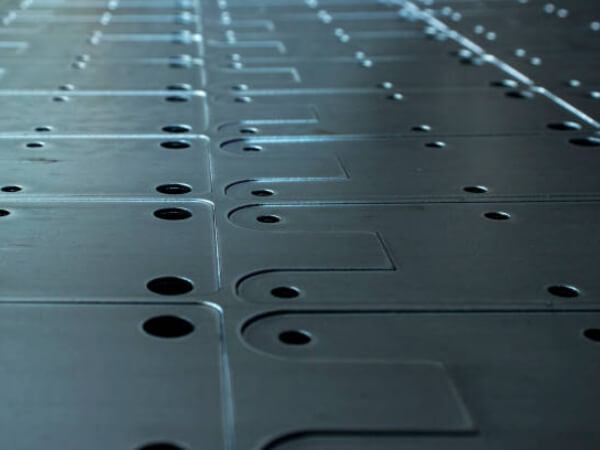
Sheet Metal Fabrication: Cutting uses hand and power tools or a handheld plasma torch to saw, shear or chisel from a computer numerically controlled (CNC) cutting machine such as a laser. In sheet metal working, cutting is a subtractive manufacturing process where functional parts are created by removing pieces of metal. Fabricators use various machines, including some unique to sheet metal working, for cutting sheet metal.
Essentially, cutting is categorized into two types: non-shearing and shearing.
Production shearing includes basic cutting, shearing and punching. These processes, which do not use shears, produce less accurate cuts and are therefore suitable for non-industrial end products.
Basic cutting uses a blade to cut metal into smaller pieces. This may be the first stage of many other manufacturing processes that follow, or it may be the only process used.
Shearing uses a top and bottom blade to make straight cuts, similar to scissors. However, in shearing the two blades do not move like scissors, but one blade moves downwards and the other remains stationary. Its advantages include: clean cuts with smooth edges, can be used for a wide range of sheet sizes, does not produce chips in the metal (so less waste), low cost for mass production and can be used at room temperature without preheating the sheet.
Blanking is the most powerful of the three processes and uses a punch to make a hole in the sheet metal. The punching process, also known as piercing, uses a punch and die to create a more precise hole in the sheet metal. The sheet metal is placed between the die and the punch, which passes through the sheet metal to the die. After the hole has been punched, the round piece of material that has been punched out can be used as a new workpiece or become scrap.
Cutting without shears is more accurate and useful in the manufacture of precision industrial products such as aerospace. Processes used in manufacturing include laser beam cutting, water jet cutting, plasma cutting and machining.
Laser cutting uses a focused beam of light, enhanced by a lens or mirror, to cut or engrave sheet metal. The benefits of laser cutting are precision and energy efficiency. However, laser cutting is more suitable for thin or medium sheet metal as it can have difficulty penetrating harder metals.
Water jet cutting uses a high-pressure jet of water at high speed to cut sheet metal. The water is mixed with an abrasive to facilitate erosion of the material during the cutting process. Waterjet cutting is particularly suitable for cutting metals with low melting points. This is because it does not generate heat that can cause the material to deform.
Plasma cutting uses heated, compressed gases that are ejected from a nozzle at high speed, ionising and conducting electricity. Examples of hot compressed gases are nitrogen and hydrogen. The electrical path of the ionised gas forms a hot plasma jet that can penetrate thick metal surfaces. Plasma cutters are less precise than water-jet and laser cutters, but they are powerful, fast and inexpensive to install.
Machining uses tools such as drills or lathe blades to cut through materials. It also includes processes such as turning and milling.
Punching uses shear forces to punch and make holes in workpieces of various sizes and shapes. A sheet of metal is placed between a punch and a die. The punch is driven down with tremendous force and speed, cutting holes and shapes.